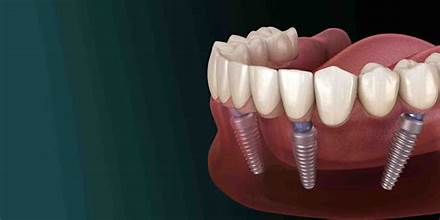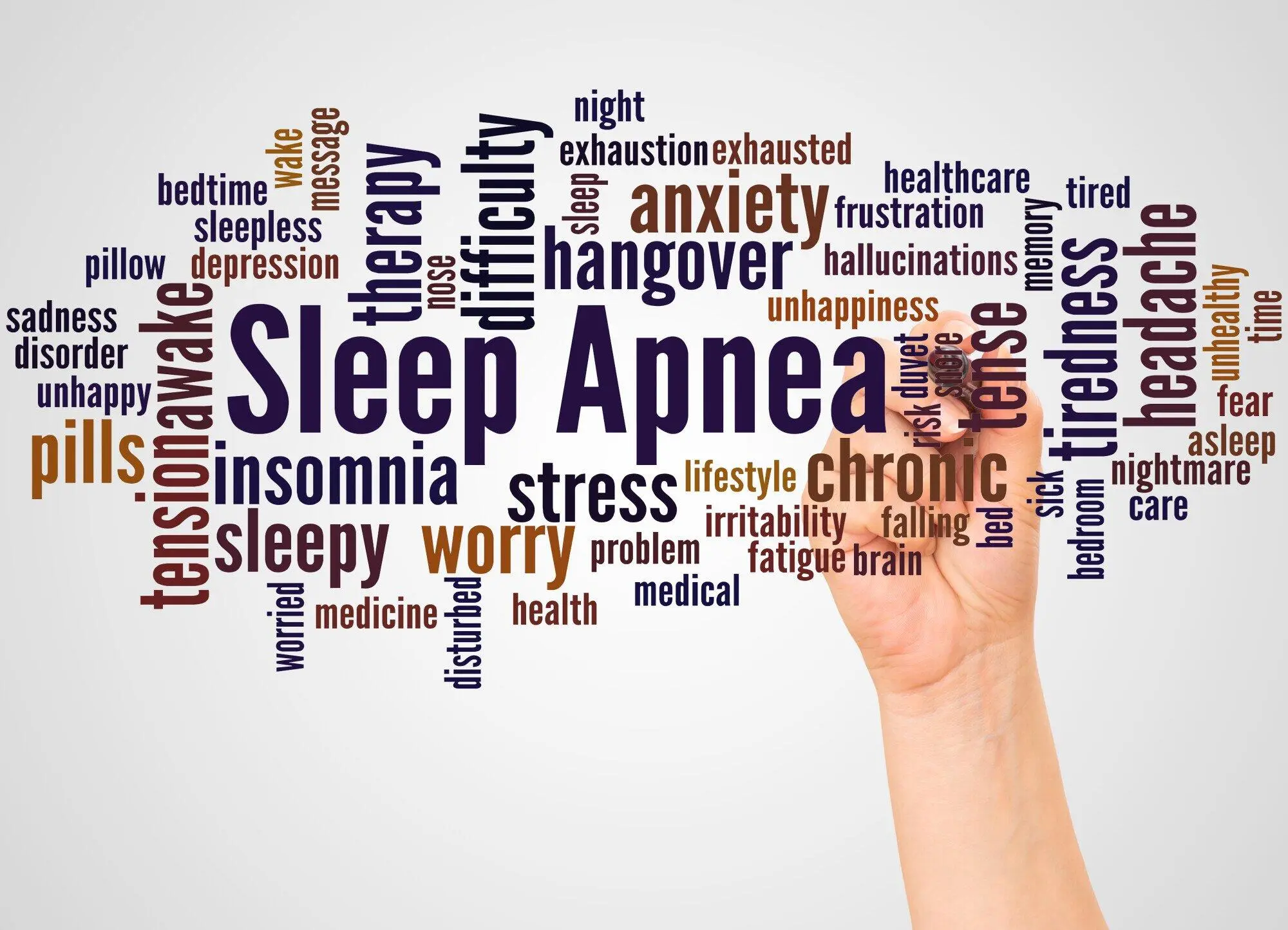HEALTH
Top 9 Myths About Clear Orthodontic Braces Debunked

Have you ever wondered if clear orthodontic braces are as effective as people say? Maybe you’ve heard they’re only for minor issues or that they cost a fortune.
With so many misconceptions floating around, it’s easy to get confused. In this blog post, we’re going to bust the myths about clear orthodontic braces.
Stick with us, and you’ll leave with a clear understanding of how these braces work and why they might be the right choice for you. Keep on reading!
1. Clear Orthodontic Braces Are Only for Simple Cases
Many people think that clear braces, like Invisalign, can only be used for small dental problems. This is a common misconception. In fact, clear braces can fix a lot of different orthodontic issues.
Clear braces can help if your teeth are crowded, have gaps, or show signs of more serious problems like overbites or underbites. Orthodontists can plan and tailor treatment for each patient thanks to new technology.
As well as making small changes for looks, it can also fix major orthodontic problems. They are very useful in many situations, which surprises a lot of people.
2. Clear Braces Are Always More Expensive Than Metal Braces
Clear braces are not at all as expensive as traditional metal braces, which is another wrong idea. As you might think, though, the price difference isn’t that big.
Some of the things that affect how much clear orthodontic braces cost are how long your treatment lasts and how complicated your case is. Now that there are more treatment options, they sometimes cost about the same as metal braces.
The cost of clear braces is often covered in part by dental insurance. To get a clear idea of how much it will cost, you should always talk to your orthodontist.
3. Clear Braces Are Less Effective Than Metal Braces
A lot of people think that metal braces work better than invisible braces. This isn’t true at all. Clear braces and metal braces are both used to move your teeth into the right place.
Like metal braces, clear braces use advanced materials to put gentle, even pressure on your teeth. The results are just as good at getting a straight smile.
One of the best things about clear braces is that they don’t stand out as much while other types do. How well your treatment works will depend more on how closely you follow your orthodontist’s plan than on the type of braces you pick.
4. Clear Braces Take Much Longer to Straighten Teeth
Clear braces are thought to take a lot longer to work by some people than regular braces. This myth isn’t true.
How long your treatment takes depends on how bad your dental problems are, not what kind of braces you wear. A lot of the time, treatment with clear braces can be finished in the same amount of time as treatment with metal braces.
Because their orthodontist plans their movements so precisely, some patients even see results faster with clear aligners. The most important thing is to wear your aligners for the recommended 20 to 22 hours every day.
5. Clear Braces Are Worn 24/7
Clear braces don’t have to be worn all day, every day, as a lot of people think. This isn’t true, thank goodness!
For a few hours each day, you can take out your clear aligners instead of your metal braces. They are more convenient because you can take them out while you eat, drink, or brush your teeth.
During your treatment, you will stay on track as long as you wear them for the recommended 20 to 22 hours each day. As one of the best things about aligners is that they allow you to move your teeth around more easily.
6. Clear Braces Are Painful
A lot of people think that having clear braces on will be painful or uncomfortable. Some people may feel a little pain when they get a new set of aligners, but most people find clear braces to be much more comfortable than metal braces.
The wires and brackets in metal braces can be sharp and hurt your mouth. If you have clear aligners, you won’t have to worry about getting poked or cut. As your teeth get used to the new aligners, most of the pain goes away quickly, and the process becomes normal.
7. Clear Braces Stain Easily
A common worry is that clear braces will get stained over time. It is true that clear aligners can turn yellow if they are not taken care of properly, but this is easy to avoid.
You can avoid stains by taking out your aligners before you eat or drink anything other than water. You can also keep your aligners clean by using mild soap and a toothbrush to clean them every so often. Modern materials for aligners are made to not stain, so it’s easier than you might think to keep them clear.
8. Clear Braces Are Only for Adults
Many people think clear braces are only an option for adults, but that’s far from true. Clear orthodontic braces are suitable for teens too!
Many teenagers prefer them because of their invisible appearance. Teenagers who are self-conscious about metal braces may feel more comfortable with clear aligners.
Additionally, aligners can be removed during sports or social events, which is a big plus for many teens. The Invisalign treatment even has a specific line designed just for teens, showing the advantages of clear braces for all ages.
9. Clear Braces Require Special Cleaning Products
Another myth is that you’ll need to buy expensive cleaning products to keep invisible dental braces in good shape. Caring for clear aligners is simple.
You can clean them with a soft toothbrush and mild soap. Rinsing them regularly and brushing your teeth before putting them back in will keep them clear and hygienic.
While there are specific cleaning tablets available, they’re not a requirement. Basic hygiene habits are all you need to keep your clear braces looking their best.
Debunking Common Myths About Clear Orthodontic Braces
Clear orthodontic braces work very well and can be used for many things. The results are the same as with traditional metal braces, but they don’t stand out as much.
Clear aligners are good for everyone, from teens to adults. These braces are easy to clean and comfortable, and they give you options in your daily life.
Clear orthodontic braces give you long-lasting results as long as you take good care of them. Check out this choice for a beautiful and confident smile!
Did you like this guide? Great! Browse our website for more!
HEALTH
Dental Implantology Will Always Involve Some Post-Surgery Pain

Are you considering getting dental implants? You’re not alone! Dental implantology is all the rage in dentistry right now, offering a reliable solution for those looking to replace missing teeth. But before you dive into this transformative treatment, there are some truths about post-surgery pain that you should know. Let’s uncover the honest facts about what to expect after undergoing dental implant surgery and how to manage any discomfort effectively.
Dental Implants Are Big in Dentistry Right Now
Dental implants have revolutionized the field of dentistry, offering a permanent and natural-looking solution for missing teeth. This innovative treatment has gained immense popularity in recent years due to its high success rates and long-term benefits.
Unlike traditional bridges or dentures, dental implants provide a stable foundation that mimics the structure of natural teeth. This not only enhances aesthetics but also improves functionality, allowing patients to eat, speak, and smile with confidence. But they do come with some risks – ongoing pain being one of them.
With advancements in technology and techniques, dental implant procedures have become more efficient and comfortable for patients. Accuracy is also vital – don’t end up with a messy operator – the more precise the implanting the better and the less chance of an unfavourable outcome. Yes, dentists can now customize treatment plans to suit individual mouth shapes, ensuring optimal outcomes for each case.
If you’re considering dental implants as a tooth replacement option, consult with your dentist to explore how this cutting-edge solution can transform your smile and overall oral health. An don’t be afraid to come across as a perfectionist – it may be the vibe that gets the very best performance out of your surgery.
All On 4 Are a Comprehensive Replacement Treatment
All On 4 dental implants have revolutionized the world of tooth replacement. This treatment involves securing a full set of new teeth on just four implants per arch. Unlike traditional dentures, All On 4 provides a permanent solution that looks and feels like natural teeth.
With All On 4, patients can enjoy restored confidence in their smile and enhanced chewing ability. The innovative design allows for a comprehensive restoration without the need for individual implants for each missing tooth. According to this dentist who does All On Fours in Lincoln Park, the surgery is usually completed in one day, reducing recovery time.
This advanced technique not only saves time but also reduces costs compared to traditional implant procedures. By strategically placing the implants at specific angles, All On 4 offers stability and support for the entire prosthesis.
All On 4 is an excellent option for those seeking a long-term tooth replacement solution that mimics the function and aesthetics of natural teeth seamlessly.
Yet it’s no secret that dental implant surgery including All On 4 can lead to post-operative pain. Many patients wonder, though, if dentists are always upfront about the discomfort they may experience after the procedure. The truth is, reputable dentists will typically discuss potential post-surgery pain with their patients before moving forward with any treatment.
Are Dentists Ever Honest About Post-Surgery Pain?
Being transparent about what to expect in terms of pain management is crucial for building trust and ensuring patient satisfaction. While some may downplay the discomfort involved in dental implantology, most dentists prioritize honesty and open communication when it comes to discussing post-operative pain.
By setting realistic expectations and providing detailed information on how to manage pain effectively following surgery, dentists can help alleviate concerns and ensure a smoother recovery process for their patients. Remember, it’s always important to have an open dialogue with your dentist about any worries or uncertainties you may have regarding post-surgery pain.
Dental Implantology Is Major Mouth Trauma
Implantology is not for the faint-hearted. It involves major mouth trauma as the dentist must surgically place metal posts into your jawbone to support artificial teeth. This process can cause discomfort and swelling, leading to post-surgery pain that varies from person to person.
The procedure itself may sound intimidating, but it’s essential for those looking to restore their smile and improve oral health. The good news is that advancements in technology have made dental implants more efficient and less invasive than ever before.
While the thought of undergoing such a procedure may be daunting, many patients find that the long-term benefits outweigh any temporary discomfort. Proper pain management techniques can help minimize post-surgery pain, allowing you to recover comfortably and enjoy your new smile sooner rather than later.
Severe Pain May Herald a Dental Emergency
While some post-surgery pain is expected after getting dental implants, severe and persistent pain should never be ignored. If you experience intense discomfort that doesn’t improve with prescribed medication or if you notice any signs of infection such as swelling, fever, or excessive bleeding, If you believe your severe pain may need an urgent solution then it’s crucial to seek immediate help from your dentist, or even go straight to hospital..
Being proactive about addressing severe pain can prevent potential complications and ensure the long-term success of your dental implant procedure. Remember, a trustworthy dentist will always prioritize your well-being and provide honest guidance throughout – and also after – your treatment journey.
Stay informed, stay vigilant, and remember that managing post-surgery pain is an essential part of the dental implant process. Trust in the expertise of your dental care provider to guide you through any challenges you may face along the way, but also trust your own panic button (instincts).
HEALTH
Sleep Soundly: The Ultimate Guide to the Best Oral Appliance for Sleep Apnea

Imagine waking up feeling refreshed, energized, and ready to tackle the day ahead. Sleep apnea no longer has to dictate the quality of your sleep or your life.
With the right dental appliances, you can say goodbye to sleepless nights and hello to peaceful slumber. But with so many options on the market, how do you know which one is right for you?
Don’t worry, we’re here to help! In this guide, we’ll take a deep dive into the best oral appliance for sleep apnea to help you make an informed decision.
Ready for a sound sleep that rejuvenates your body and mind? Let’s dive in!
Mandibular Advancement Devices
MADs are the most commonly recommended oral appliance for sleep apnea. They work by gently shifting your lower jaw forward, which helps to keep your airway open while you sleep.
This prevents the collapse of soft tissue at the back of your throat that causes snoring and obstructive sleep apnea. MADs are easy to use, customizable, and often more effective than other types of oral appliances.
Tongue Retaining Devices
For those who prefer not to have anything in their mouth while sleeping, TRDs are a great alternative. They work by holding the tongue in place to prevent it from falling back and blocking the airway.
They are also more compact and portable than MADs, making them a great option for travel. However, they can be a bit uncomfortable at first and not be as effective for more severe cases of sleep apnea.
Continuous Positive Airway Pressure Masks
CPAP masks are often the first line of treatment for sleep apnea. They work by delivering a continuous stream of air through a mask, keeping your airway open while you sleep.
While effective, CPAP masks can be bulky and uncomfortable, making it difficult for some people to adjust to wearing them every night. Additionally, they may not be a viable option for those who frequently travel.
Adjustable Airway Pressure Devices
Similar to CPAP masks, adjustable airway pressure devices deliver a constant stream of air, but with the added ability to adjust the air pressure. This can be beneficial for those who have trouble tolerating high pressures and experience discomfort or dry mouth.
Plus, they are more compact than CPAP masks, making them easier to travel with. However, they may not be as effective as other options for those with serious cases of sleep apnea.
Custom-Fitted Dental Mouthpieces
These are the most expensive and time-consuming options, but also the most effective for acute cases. A dentist will take impressions of your teeth and create a customized mouthpiece that holds your jaw in a forward position while you sleep.
This helps to keep your airway open without the need for bulky equipment or uncomfortable straps. However, it may not be covered by insurance and requires regular check-ups for adjustments.
Those seeking personalized treatment might explore solutions like this oral appliance therapy in Pasadena, CA. They offer customized devices designed to fit your needs and improve the quality of your sleep.
Exploring the Best Oral Appliance for Sleep Apnea
Choosing the best oral appliance for sleep apnea is a significant step towards better sleep and improved health. Remember, the right device is the one that you feel comfortable using every night.
Consult with a sleep specialist or a dentist experienced in this treatment to find your ideal match. Ready to reclaim your night’s rest and transform your days? Explore your options today and wake up to a brighter, more vibrant tomorrow.
Did you find this article helpful? Check out the rest of our blog now for more!
HEALTH
The Importance of Personalized Treatment Plans in Intensive Inpatient Therapy

Have you or a loved one ever needed help that felt truly tailored just for you?
In the world of mental health, one size hardly fits all, which is why the concept of personalized treatment plans in intensive inpatient therapy is changing lives. Imagine a plan that understands your unique struggles, strengths, and goals.
This article dives into why personalized plans are not just beneficial but essential in intensive inpatient therapy, offering a beacon of hope for those seeking a path to recovery.
Tailored Approach
A tailored approach in therapy means the treatment is made just for you. It looks at what you need and what your goals are. This way, you get help that truly fits what you’re going through.
When therapy fits your needs, you might feel better faster. It’s because every part of your treatment is chosen to help you the most.
Holistic Care
Holistic care entails considering a person’s health from all angles, not just one. It includes the health of your mind, body, and emotions. This method helps make sure that all the things that might affect a person’s healing are thought about.
When someone is in intensive hospital therapy, holistic care can include a lot of different types of intense treatment. This could be going to talk therapy, working out, or learning new ways to calm down. These all help the person get better as a whole.
Increased Engagement
When therapy is personalized, patients are more likely to get involved in their treatment plans. They feel that their views and preferences are heard and valued. This leads to a stronger commitment to attending sessions and following through with the treatment plan.
Increased engagement means patients play an active role in their recovery process. They work closely with their therapists to set goals and achieve them, making progress more visible and meaningful.
Efficient Resource Allocation
Efficient resource allocation ensures that the treatment resources are used in the best way possible. This approach aims to maximize the benefits to the patient while minimizing waste. It means every aspect of the therapy, from the time spent with therapists to the use of therapy tools, is optimized for effectiveness.
This method helps both the therapy providers and the patients. Providers can offer high-quality care without unnecessary expenditures, and patients receive focused treatment that is more likely to lead to successful outcomes. If individuals require continued support after intensive inpatient therapy, read this guide to IOP (Intensive Outpatient Program) for seamless transition and ongoing care.
Flexibility and Adaptability
Personalized intense therapy depends on being able to change and adapt. With this method, the treatment plan can be changed as the patient’s needs change over time. It makes sure that the therapy stays useful and helpful while the person is recovering.
This ability to change is very important for dealing with problems or changes in a patient’s state that come out of the blue. It lets doctors change their methods to best help the patient’s growth, making sure that they keep making progress toward their recovery goals.
Intensive Inpatient Therapy Leads the Way.
In conclusion, intensive inpatient therapy stands out as a powerful tool for healing and growth. This approach provides personalized, holistic care that can meet each person right where they are in their mental health journey.
With a focus on fitting the therapy to the person, not the other way around, it opens the door to a brighter, healthier future for those who take part.
If you gained new insights from this article, be sure to explore our blog for more enlightening content.

 ENTERTAINMENT1 week ago
ENTERTAINMENT1 week agoExploring the Kristen Archives: A Treasure Trove of Erotica and More

 TECHNOLOGY4 months ago
TECHNOLOGY4 months agoBlog Arcy Art: Where Architecture Meets Art

 LIFESTYLE1 week ago
LIFESTYLE1 week agoWho Is Sandra Orlow?

 LIFESTYLE4 months ago
LIFESTYLE4 months agoThe Disciplinary Wives Club: Spanking for Love, Not Punishment

 ENTERTAINMENT5 days ago
ENTERTAINMENT5 days agoKiss KH: The Streaming Platform Redefining Digital Engagement and Cultural Currents

 GENERAL4 months ago
GENERAL4 months agoWhat are stories of male chastity? A Comprehensive Guide

 GENERAL5 months ago
GENERAL5 months agoSmartSchoolBoy9: The Rise of a Viral Chasing Kid Sensation

 GENERAL9 months ago
GENERAL9 months agoWhat is goku.sx? Everything we need to know












